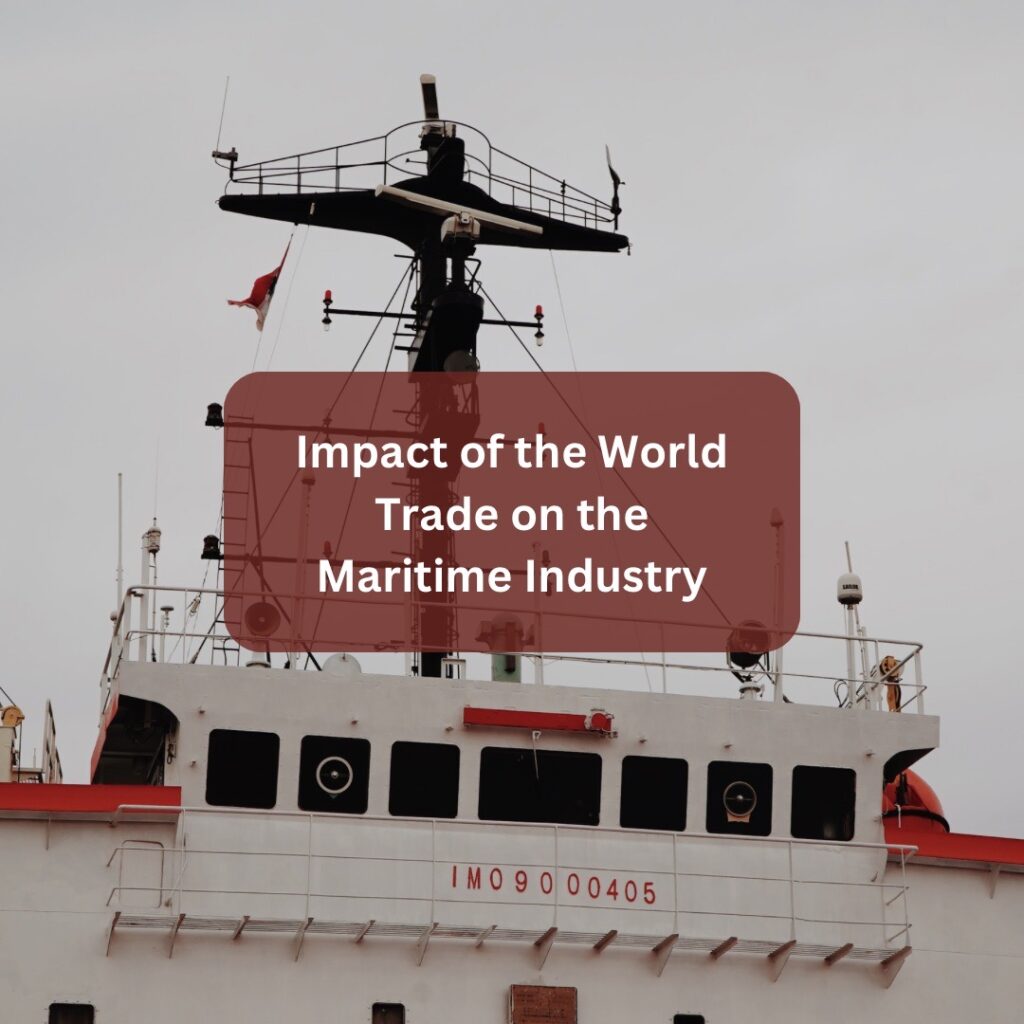The Impact of Global Trade on Maritime Shipping
Our lives today are made possible thanks to the massive and intricate network of global trade covering all parts of the world. Global trade is one of the cornerstones of our modern world, facilitating the exchange of goods and services between nations all over the globe.
At the heart of this interconnected system lies the maritime shipping industry, which plays a pivotal role in transporting goods across the vast oceans. This article will explore the intricate relationship between global trade and maritime shipping, highlighting its significance and exploring key aspects that drive this vital industry.
Maritime shipping is the backbone of global trade. Ships act as floating warehouses, facilitating the movement of diverse goods worldwide. Today, over 80% of global trade by volume is transported through maritime shipping, which means it is the main vein when it comes to global trade. And while there are some key hotspots around the globe, such as Shanghai, Singapore, Rotterdam, and Los Angeles, the shipping network covers the entire world including remote or hard-to-reach locations.

Impact of Global Trade on Maritime Shipping
Global trade has a profound impact on maritime shipping, shaping the industry in various ways. Here are a few of the major effects of global trade on the shipping industry:
Volume and Demand:
The volume and demand for shipping services are directly influenced by the heavy reliance of global trade on maritime shipping. As goods are transported across oceans, the need for shipping services increases, ensuring the industry’s ongoing relevance and growth. The continuous flow of trade sustains the demand for maritime shipping, making it an essential component of the global economy.
Containerization and Efficiency:
Containerization has had a transformative impact on maritime shipping, significantly improving efficiency. By introducing standardized containers, cargo handling has become streamlined and logistics processes have been optimized. The use of containers allows for efficient loading and unloading of goods, resulting in faster, more reliable, and cost-effective global trade. This innovation has revolutionized the industry, making it easier to transport diverse goods and facilitating intermodal transport between ships, trucks, and trains.
Trade Routes and Infrastructure:
Trade routes and infrastructure are closely linked to global trade in maritime shipping. The busiest trade routes are determined by global trade patterns, with strategic locations such as major ports and chokepoints playing pivotal roles. Shipping companies and ports recognize the importance of accommodating the growing demands of global trade and therefore invest in infrastructure development. This includes expanding port facilities, improving navigational channels, and enhancing transportation networks to ensure efficient and smooth movement of goods. Strong infrastructure enables the seamless flow of trade, reduces congestion, and supports the growth of international commerce.
Market Dynamics:
Market dynamics play a crucial role in shaping shipping activities within the global trade landscape. The demand for specific goods and commodities is heavily influenced by global trade, which in turn drives shipping activities. The growth of emerging markets, changes in consumer preferences, and shifts in supply chain dynamics all have a significant impact on the volume and nature of cargo transported by ships. As trade patterns evolve, shipping companies must adapt to meet the changing demands of the market, including diversifying their services and optimizing their logistics networks to accommodate the evolving needs of global trade.
Technological Advancements:
Global trade serves as a catalyst for innovation and technological advancements in the maritime shipping industry. The pursuit of more efficient and effective operations drives the adoption of automation, digitalization, and cutting-edge technologies such as blockchain and the Internet of Things (IoT). These advancements improve operational efficiency by streamlining processes, enhancing safety measures, and enabling better management of the supply chain. Automation minimizes manual labor, while digitalization and technologies like blockchain and IoT enhance transparency, security, and real-time monitoring. The continuous push for technological advancements ensures that the maritime shipping industry remains at the forefront of innovation, enabling it to meet the evolving demands of global trade.
In a nutshell, global trade shapes the maritime shipping industry by driving demand, encouraging innovation, and necessitating efficient logistics solutions to meet the evolving needs of international commerce. The intricate relationship between global trade and maritime shipping underscores the interdependence of nations in a globalized world. As the backbone of international trade, the shipping industry facilitates the movement of goods across vast distances, connecting consumers, producers, and markets.

Leave a Reply